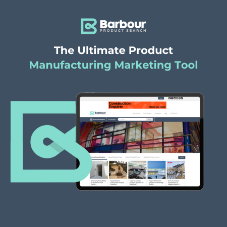Chris Ashworth considers the merits of Project Selling compared with a Key Account approach for promoting building product specifications.
I’m often asked which is the better approach, to focus the sales team on new projects as they are published in Barbour ABI or to build relationships with key accounts? And my answer is both. Let me clarify what may sound like a rather unhelpful reply.
Project selling, as the name suggests, is very project focused and goes back to the early days of project lead systems. When I first started in sales, project leads were printed on cards and each salesman would receive a pack for follow-up on a weekly basis. Today everything is digital, but it is still about working through a list of new projects and calling the architect or engineer to see if there is an opportunity for your products. It could be described as old school.
While this does mean that every project is followed up (in theory at least) it is not effective. Many manufacturers use this approach and the unfortunate architect can expect a surge of calls and emails once the project details are published. The chances are that these will be ignored. Firstly, because the architect does not have the time to engage with all of the manufacturers, and also because they are not ready to think about the majority of product applications. So even if you are using a marketing automation system to generate an introductory email, with very little cost, it is ineffective and devalues your organisation’s reputation.
Key Account selling is about building relationships with your most important customers, understanding their issues and challenges and developing tailored solutions to meet these. Very often this involves bespoke solutions delivering value through the benefits you provide, including cost savings as a result of a more effective approach – which is the true meaning of value engineering. It is also about engaging at multiple points within the customer organisation. This is an approach which the building product manufacturer can apply to Clients, Architects, Main Contractors and Specialist Sub-contractors. It allows a close relationship to be built with each customer, making it harder for your competitors to replace you. But it does require a lot of your organisation’s time and effort and is thus expensive to implement. So, it’s important to select your key accounts carefully.
My recommendation would be two adopt a three-tiered approach, starting with an analysis of the Barbour ABI database:
Top Tier: The organisations that are regularly involved in the projects that you have most success with. Look at the industry sectors (i.e. Education, Healthcare, Residential) where you achieve good sales and the types of contract (i.e. Traditional, Design & Build) which are best suited to your products. The organisations doing most work in these categories are your target key accounts, you should already have relationships with many of these. Your aim should be to build ongoing relationships with them, understanding their challenges and working to help them secure value from their projects.
Middle Tier: This group do not represent so much of an opportunity but are still important. They probably comprise architects and specialist contractors who are regularly using your products, or your competitors’ products. It is still desirable to build relationships, but probably not as intense as with the Top Tier. This is where marketing automation and CRM can help to make the engagement cost effective. You need your contacts to feel that you understand their business, so a personalised approach is required. If they design schools, tell them about school projects you have completed not hotels or residential. Developing personas for your different customer categories can help you ensure a focused approach.
Lower Tier: These are the remainder, organisations that only specify or use your products occasionally and hence justify minimal effort. Adopt a reactive approach, relying on your marketing activity to create awareness and responding to their enquiries when they are received, with a subsequent sales follow-up.
All of this is overlaid with a project approach. If you have done a good job with the Top and Middle Tiers, they should contact you to discuss a project when it is at a stage where they want to develop your product applications. But there should also be an internal review process which identifies when each organisation has a relevant project with a follow-up mechanism to ensure it is your product they are considering.
This approach maximises the return from your marketing and sales effort without bombarding your target decision makers and contributes to building long lasting relationships.
If you would like help in setting up a tiered approach to your marketing and sales activity Competitive Advantage can provide various levels of support from giving advice to undertaking some of the implementation tasks.
Further Information
Chris Ashworth is founder of Competitive Advantage Consultancy which specialises in helping building product manufacturers to be more effective at getting their products selected, providing a range of sales and marketing tools to help with specification strategy.
Sign up to the Competitive Advantage newsletter for an overview of construction market activity as well as construction sales and marketing advice.


crop192.png)













